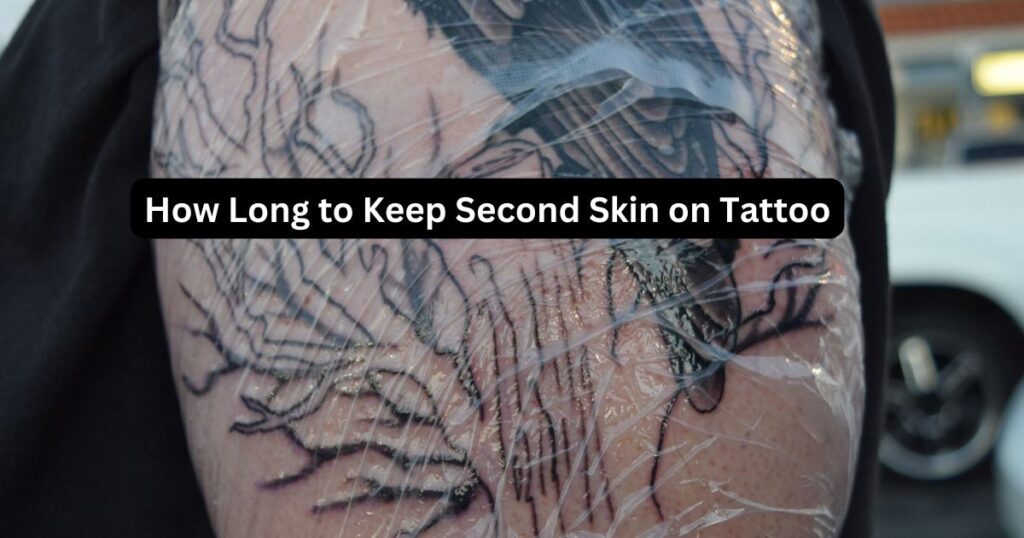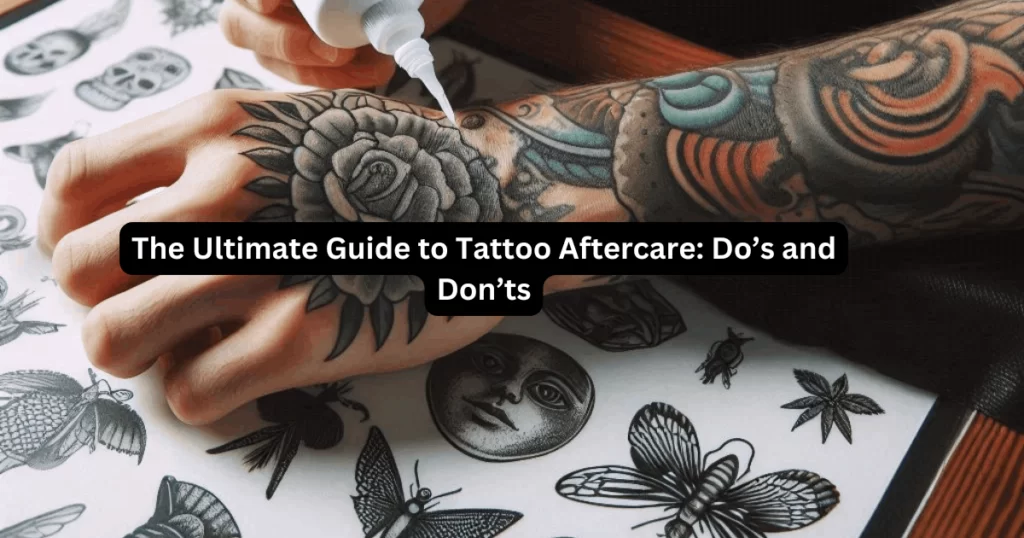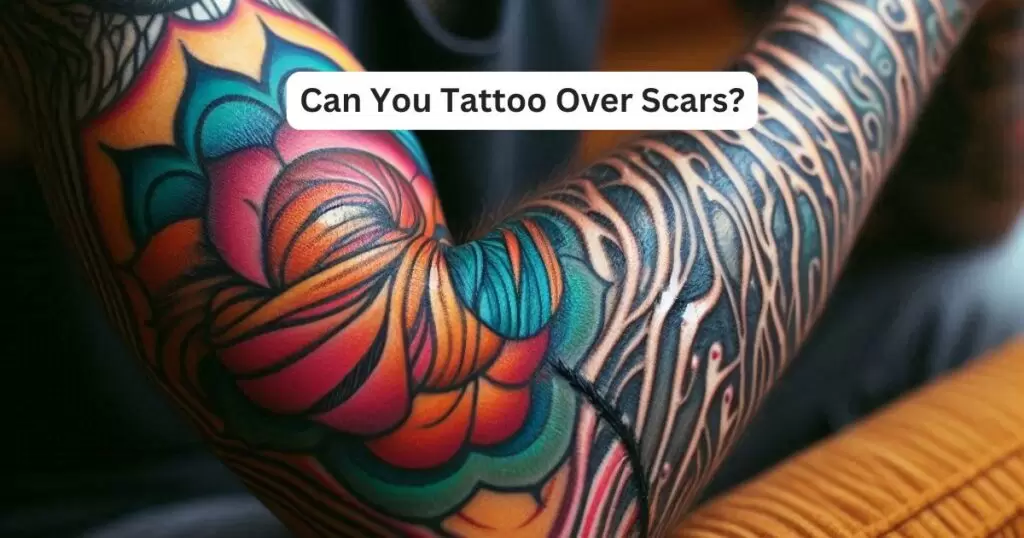After getting a new tattoo, keeping the second skin on for 3 to 6 days is essential. This initial period is crucial for healing. The second skin acts as a protective barrier, helping to shield your tattoo from bacteria and friction while allowing it to breathe.
Why Use Second Skin?
Second skin, also known as a tattoo bandage or adhesive wrap, provides a sterile environment for your tattoo. This is important in the first few days after getting inked. During this time, your tattoo is most vulnerable to infection, irritation, and damage.
The second skin locks in your body’s natural moisture, which helps the tattoo heal faster. It also prevents external elements like dust, dirt, and bacteria from entering the wound. These benefits make the second skin an effective alternative to traditional cling film or plastic wrap.
How Long to Keep Second Skin on Tattoo
You should keep the second skin on for a minimum of 3 days and a maximum of 6 days. The exact timing depends on several factors:
- Tattoo Size and Placement: Larger tattoos or those in areas that move a lot (like joints) might need more protection. In these cases, you might opt to keep the second skin on closer to the 6-day mark.
- Skin Type: If your skin tends to heal quickly or if it’s naturally oily, you might remove the second skin after 3 days. Conversely, if you have dry or sensitive skin, you might keep it on longer.
- Your Tattoo Artist’s Advice: Always listen to your tattoo artist’s instructions. They know how your specific tattoo should heal and can provide tailored advice.
Removing the Second Skin
When the time comes to remove the second skin, do so gently. Start by washing your hands thoroughly to avoid introducing bacteria to the tattoo. Next, slowly peel back the second skin from the edges. Do this under lukewarm running water. The water will help loosen the adhesive and make removal easier.
Avoid pulling too hard or too quickly, as this could damage the healing tattoo. If the second skin sticks to your tattoo, apply a little more water and peel slowly.
After removing the second skin, clean the area with mild soap and water. Pat it dry with a clean towel. Do not rub the tattoo, as this can irritate the skin and cause scabs to form.
What to Expect Under the Second Skin
When you remove the second skin, it’s normal to see a buildup of fluids. This might include plasma, ink, and a small amount of blood. Don’t worry—this is a natural part of the healing process.
Your tattoo might look a bit smudged or blurry, but this will clear up as it continues to heal. The area might also feel a little sensitive or itchy. Resist the urge to scratch, as this can disrupt the healing process.
Caring for Your Tattoo After Removing Second Skin
Once the second skin is off, your tattoo will enter the next phase of healing. This is when it’s most important to keep it clean and moisturized.
- Keep It Clean: Wash your tattoo twice a day with mild soap and lukewarm water. This helps prevent infection and removes any remaining adhesive residue. Pat the tattoo dry with a clean towel—never rub.
- Moisturize: Apply a thin layer of fragrance-free moisturizer to keep the skin hydrated. Avoid using thick creams or petroleum-based products, as these can suffocate the tattoo and delay healing.
- Avoid Sun Exposure: Keep your tattoo out of direct sunlight while it heals. Sun exposure can fade the ink and increase the risk of infection. If you need to go outside, cover the tattoo with loose clothing.
- Stay Out of Water: Avoid soaking your tattoo in water for at least two weeks. This includes swimming pools, hot tubs, and baths. Showers are fine, but keep the water lukewarm, and don’t let it hit the tattoo directly.
- Wear Loose Clothing: Tight clothing can rub against your tattoo and cause irritation. Opt for loose, breathable fabrics that won’t stick to the tattoo.
Signs of Infection or Complications
While most tattoos heal without issues, it’s important to watch for signs of infection or other complications. These might include:
- Redness or Swelling: Some redness is normal, but if it spreads or becomes more intense, it could be a sign of infection.
- Pus or Discharge: If you notice yellow or green discharge, seek medical attention. This could indicate an infection that requires antibiotics.
- Fever or Chills: If you develop a fever, it could be a sign that your body is fighting an infection. Contact a healthcare professional immediately.
- Persistent Pain: It’s normal for a tattoo to be sore, but if the pain increases over time, this could be a sign of a problem.
If you experience any of these symptoms, contact your tattoo artist or a healthcare professional. It’s always better to address potential issues early.
When to Consult a Professional
While mild symptoms like redness and itching are normal, it’s important to recognize when something is off. If you’re unsure about any aspect of your tattoo’s healing, don’t hesitate to reach out to your tattoo artist. They have the experience to know what’s normal and what’s not.
In some cases, you might need to consult a dermatologist. This is especially true if you have a history of skin conditions or allergies. A professional can provide specific advice tailored to your skin type and healing process.
FAQs
Can I Shower With Second Skin?
Yes, showering with a second skin, such as Saniderm or similar waterproof bandages, is generally acceptable and often recommended for new tattoos. However, while showering is fine, do not submerge the tattoo in water (like in baths or pools) until it has fully healed, typically for at least a month.
Is 2nd Skin Waterproof?
Yes, second skin bandages like Saniderm are waterproof, allowing you to shower while wearing them. However, it’s best to minimize direct water exposure and avoid long, hot showers that produce excessive steam, as this can weaken the adhesive and cause the bandage to peel off prematurely.
Should I put lotion on my SecondSkin?
No. Do Not Apply Lotion Under SecondSkin: Applying lotion while the SecondSkin is still on can compromise its effectiveness and the healing of the tattoo.
What is the Liquid Under the Secondskin Tattoo?
The liquid that accumulates under the SecondSkin tattoo bandage is a normal part of the healing process and consists of a mixture of blood, plasma, and ink. This fluid is produced as the body responds to the trauma of the tattooing process.
Specifically, when the skin is punctured, the lymphatic system sends plasma filled with antibodies to the area to aid in healing and to help clear out excess ink. This weeping can occur for up to 48 hours after the tattoo is applied and is typically not a cause for concern unless there is excessive leakage or the bandage becomes compromised
Conclusion
Keeping the second skin on your tattoo for 3 to 6 days helps protect your new ink during the most critical stage of healing. It acts as a barrier against bacteria and physical damage while allowing your tattoo to breathe. Removing the second skin gently and caring for your tattoo afterward ensures a smooth healing process.




